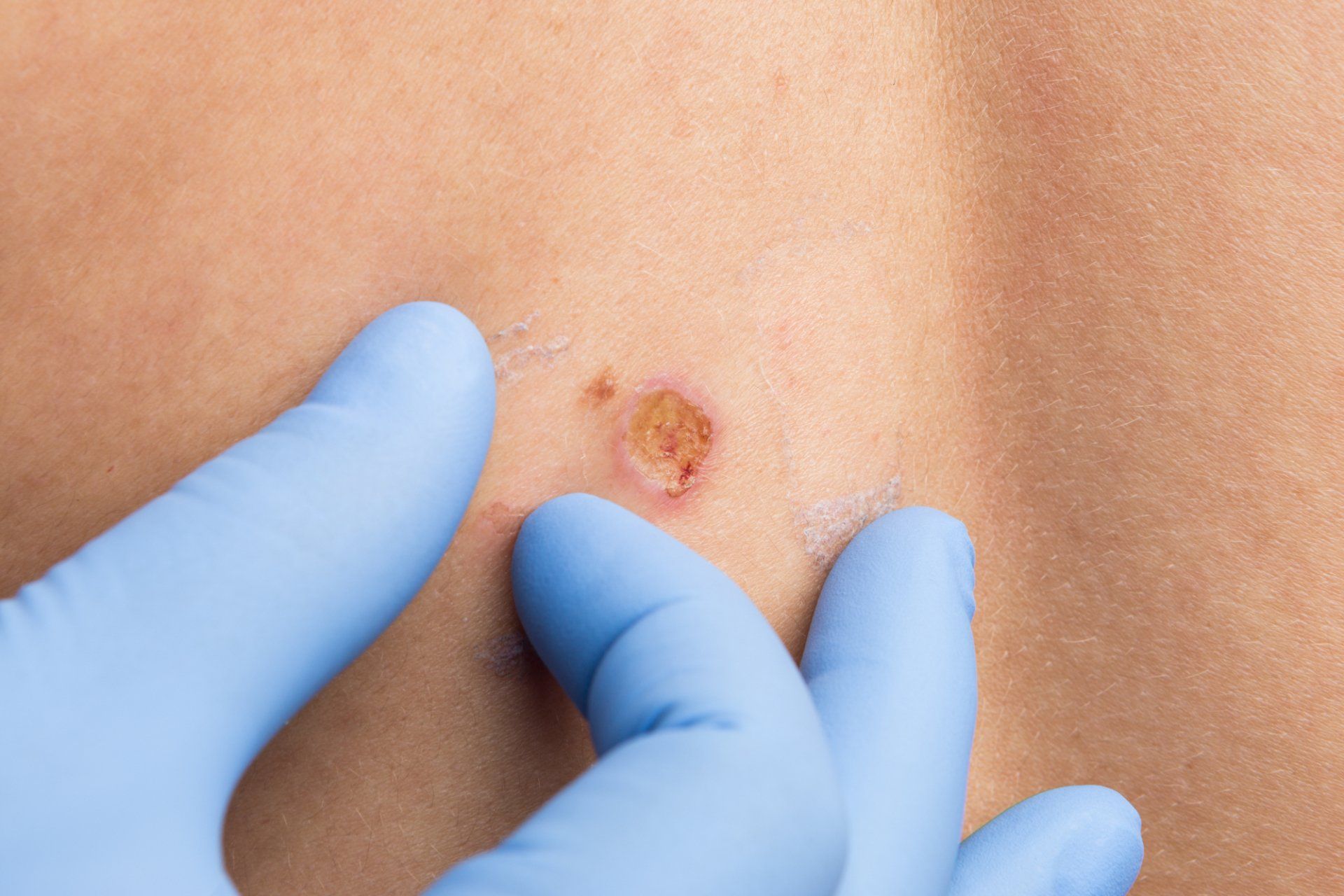Surgical Treatments for Skin Cancer
Guardian Dermatology, P.C. | Helena, MT
Expert Surgical Treatment Options for Skin Cancer
There are several surgical options available to treat both common and rare skin cancers. As part of his residency and dedicated cutaneous oncology fellowship training, Dr. Skelley is well versed in the art of developing personal treatment plans for each individual patient’s specific skin cancer needs.
Dr. Skelley believes strongly that determining the best treatment option for each patient is an individualized process. He will discuss with you the advantages and disadvantages of all proposed treatment options to ensure the best plan of care is selected for you and your specific needs.
Electrodesiccation & Curettage (ED&C)
ED&C is a fast, convenient, outpatient procedure that involves the use of a curette (a special surgical instrument) to scrape away the skin lesion or skin cancer of concern, along with the application of electrical current to burn away any remaining portion of the lesion and to heat seal the wound to prevent bleeding. This treatment is typically ideal for thin, low-risk skin cancers and non-cancerous growths in non-cosmetically sensitive areas. The wound that is created with an ED&C procedure is allowed to heal on its own over time. This allows for minimal care requirements for the wound, but it can lead to variable scarring and pigmentation changes of the treated site. The success of this technique is highly dependent on knowing when and where the treatment is appropriate compared to other surgical and medical options.
Surgical Excision
A surgical excision is a procedure that removes a skin cancer or other skin lesion from the body, typically with a minimal amount of surrounding healthy tissue (called a margin). The goal of surgical excision is to completely remove the lesion of concern and try to prevent it from coming back. Surgical excision, when appropriately indicated, is used for the removal of several types of cancerous and non-cancerous growths. There are many variables that must be considered to ensure complete removal of the lesion of concern. Commonly excised skin lesions include cysts, lipomas, abnormal moles, and certain skin cancers, such basal cell carcinoma, squamous cell carcinoma, and melanoma.
Cryosurgery
Cryosurgery is a minimally invasive procedure that uses the application of liquid nitrogen to freeze and eliminate certain types of non-cancerous, pre-cancerous, and rarely thin, early cancerous skin lesions. This procedure offers the advantage of a quick and efficient treatment for appropriately selected skin lesions. After freezing the skin, the lesion of concern often blisters and/or sloughs off over the next few days and then new skin heals from underneath. There is a risk of scarring, lesion recurrence, and hypopigmentation (development of a white spot) in the area treated with cryotherapy.
Schedule an Appointment
Ready to schedule an appointment at Guardian Dermatology? Please call us at 406-272-5941 or click on the button below to get in touch.



